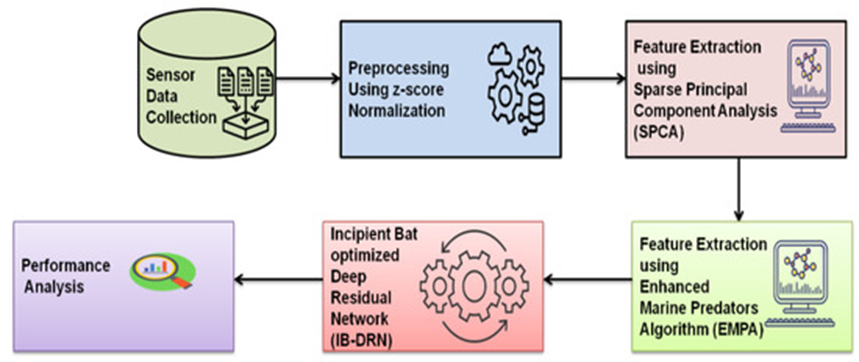A Smart Battery Management System for Electric Vehicles Using Deep Learning-Based Sensor Fault Detection
This research suggests a system for battery data, especially lithium ion batteries, that allows deep learning-based detection and the classification of faulty battery sensor and transmission information.

Figure 2. Overview of Research Process.
Battery sensor data collection and transmission are essential for battery management systems (BMS). Since inaccurate battery data brought on by sensor faults, communication issues, or even cyber-attacks can impose serious harm on BMS and adversely impact the overall dependability of BMS-based applications, such as electric vehicles, it is critical to assess the durability of battery sensor and communication data in BMS. Sensor data are necessary for a BMS to perform every operation. Effective sensor fault detection is crucial for the sustainability and security of electric vehicle battery systems. This research suggests a system for battery data, especially lithium ion batteries, that allows deep learning-based detection and the classification of faulty battery sensor and transmission information. Initially, we collected the sensor data, and preprocessing was carried out using z-score normalization. The features were extracted using sparse principal component analysis (SPCA), and enhanced marine predators algorithm (EMPA) was used for feature selection. The BMS’s safety and dependability may be enhanced by the suggested incipient bat-optimized deep residual network (IB-DRN)-based false battery data identification and classification system. Simulations using MATLAB (2021a), along with statistics, machine learning, and a deep learning toolbox, along with experimental research, were used to show and assess how well the suggested strategy performs. It is shown to be superior to traditional approaches.
Authors: Venkata Satya Rahul, Kosuru and Ashwin Kavasseri Venkitaraman
In the same category
- A Smart Battery Management System for Electric Vehicles Using Deep Learning-Based Sensor Fault Detection
- Autel Energy Europe at AEC 2024: Pioneering the Future of Ultra-Fast EV Charging
- Baden-Württemberg International: Your partner for a successful expansion
- Business Region Goteborg : Gothenburg - Pioneering tomorrow's mobility
- Charging Electric Vehicles Today and in the Future
- Comparative Study of Permanent Magnet, Conventional, and Advanced Induction Machines for Traction Applications
- Design Methodology and Circuit Analysis of Wireless Power Transfer Systems Applied to Electric Vehicles Wireless Chargers
- Designing High-Power-Density Electric Motors for Electric Vehicles with Advanced Magnetic Materials
- Energy and Environmental National Assessment of Alternative Fuel Buses in Morocco
- Energy Management and Optimization of Large-Scale Electric Vehicle Charging on the Grid
- Fuel Cell Hybrid Electric Vehicles: A Review of Topologies and Energy Management Strategies
- Numerical Simulation of Cooling Plate Using K-Epsilon Turbulence Model to Cool Down Large-Sized Graphite/LiFePO4 Battery at High C-Rates
- Using an Intelligent Control Method for Electric Vehicle Charging in Microgrids
- Will Utrecht become the world's first bidirectional city?